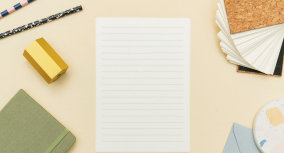For most people, memorizing large chunks of information is not easy. It requires the right strategies to help our brain process and remember them effectively. If you’re a chemistry student, you need to work with the periodic table often, and learning all the elements in order can be a challenge.

Don’t worry—our custom writing team is here to help! This article will:
- explain how to read the periodic table;
- introduce you to the best memorization methods and tips.
The information presented here will be helpful for anyone interested in memorization techniques, not just chemistry students.
⚛️ How to Read the Periodic Table
Did you know that Dmitri Mendeleev created the first periodic table in 1869? He did it after noticing that some elements shared similar characteristics. The periodic table is full of various repeating patterns—it allowed predicting the existence of some elements even before they were discovered.
That’s why, before memorizing the periodic table, it’s best to understand how it’s organized. It will allow you to read it correctly and efficiently. If you need a quick reminder of the periodic table basics, check out the information below.
Elements & Their Properties
So, what is a chemical element? Well, it’s a substance that consists of atoms with the same atomic number. It cannot be split into simpler substances using typical methods. Each element in the table has a square containing all necessary information about it, such as its name, official chemical symbol, and atomic number. Another important indicator is period. Let’s take a closer look:
Groups of Elements
Elements with similar properties are placed together and are colored differently in the periodic table. These groups are also called families. According to them, chemicals can be classified into metals, nonmetals, metalloids, halogens, noble gases, and rare earth elements.

🎓 How to Learn the Periodic Table of Elements: Ultimate Guide
For an unprepared student, the periodic table is full of confusing symbols and numbers. It even looks terrifying at first glance. However, you don’t have to worry—our tips will help you quickly memorize all 118 elements!
Top 5 Mnemonic Devices
You may know that it’s easier to remember information when it’s interconnected in some way. For instance, most people quickly learn songs or poems that rhyme. However, things are different with chemical elements: their names are unrelated to each other, and their order is not apparent. Is there anything that can help you memorize them?
Well, we suggest using mnemonic devices to remember this kind of information. They can take various forms, and you’re free to choose them depending on your preferences. For instance, flashcards, acronyms, and simple poems are all forms of mnemonic devices.
When it comes to the periodic table of elements, we recommend these 5 effective techniques:
- Phrases. Chemistry mnemonic phrases consist of words made using the elements’ names. It’s best to create a mnemonic that you find funny or familiar. Here’s an example: Harry Helps Little Betty Brown Crack Nits On Friday Nights. The first letters here refer to the first 10 elements on the periodic table.
- Acronyms and acrostics. This technique refers to creating words containing the first letters of the elements’ names. The words can be nonsensical as long as they are easy to remember. For instance, the word HHeLiBeBCNOFN has no meaning, but it contains the symbols of the first 10 elements. You can also create a phrase related to that word to help you remember it.
- The element songs. One of the best ways to memorize chemical elements is by listening to songs. You may find it surprising, but there are plenty of fun element songs you can find online. Choose one and play it on repeat while you get ready in the morning or on your way to school.
- Mental imagery. Some people are more inclined to memorize information if they have a visual in their mind. Are you one of them? In that case, watching YouTube videos on “How to Memorize” may be helpful, as they use pictures and colors to introduce information. Creating your own visual story or linking an image to each element may also be useful.
- Create your own quizzes. It may seem weird to work on periodic table questions yourself, but you may be surprised by how efficient this method can be. While preparing the questions, you’ll do more research on the elements and structure key information. Quizzing yourself can help you see what topics you need to brush up on and pay attention to.
Repetition Techniques for Memorizing
Memorizing all the elements is only the first step. You also need to be able to recall them correctly. How do you do that? Well, there is a way to make it easier: repetition. At first glance, it may seem like a dull and ineffective technique. However, studies show that this type of learning facilitates remembering and retrieving information from your memory. So, why not make use of it?
Here are the strategies that will make the process easier and more fun:
Learning the Periodic Table Using Visual Memory
Do you prefer memorizing information visually? If so, you’ll find this section especially helpful! Here is a list of tips that you might want to incorporate into your study routine to learn the periodic table (or anything else) effectively:
- Print the table leaving blank spaces to fill in. Recreating the periodic table visually by yourself is a great way to practice.
- Use flashcards. Flashcards are a fantastic way to memorize large chunks of information. Even while making the cards, you’re already learning the elements’ names. You can also include the atomic number on the card.
- Use colors. Color is an essential element in visualization. By relating various colors to a specific element group, you help your brain sort information and create an image in your mind. This method can make the process of memorization much quicker and more efficient.
Best Apps to Help You Learn the Elements
Since phones have become a fundamental part of our lives, using apps to learn and memorize new information can be a great idea. Here are some of our favorites that we suggest you try out:
- Periodic Table 2024
This app will provide you with information on every element of the periodic table. When you click on the chemical element, you learn its name in Latin and English, when it was discovered, and by whom. The app has a modern, intuitive design. Additionally, it provides links to other sources and saves your search history. - Periodic Table by Royal Society of Chemistry
This app introduces the user to each element and includes content such as videos, images, and podcasts. You just need to click on each chemical to learn more about it. The application also allows the user to see patterns and trends that make up the table. It’s available for both mobile and tablet devices. - The Elements by Theodore Gray
This paid application not only provides information but also dives into the history of each element. It even describes the effect each of them has on the Universe as a whole. Besides, it has awesome illustrations. - NovaElements
This free app from PBS is perfect for children. Aside from an interactive periodic table, it has games and beautifully produced videos. Another cool feature is models of atoms that you can build yourself.
👍 Bonus Memorization Techniques for Any Subject
Finally, we would like to share our favorite tips for remembering large chunks of information, be it chemistry or any other subject.
We hope that after reading our article, you don’t feel intimidated by the periodic table anymore and can now memorize it quickly while having a little fun. Try implementing our tips into your study routine and see what works best for you!

![How to Deal with FOMO in College [+Turn It into JOMO]](https://custom-writing.org/blog/wp-content/uploads/2022/10/smiling-african-student-pointing-with-pencil-laptop-screen-concentrated-blonde-woman-glasses-propping-chin-with-hand-while-working-with-computer-office-1-284x153.jpg)

![How to Get Perfect Letters of Recommendation for College [Guide]](https://custom-writing.org/blog/wp-content/uploads/2022/08/NA_SEP._14-284x153.jpg)

![How to Search the Web Effectively [For Students]](https://custom-writing.org/blog/wp-content/uploads/2022/08/hand-touching-with-search-icon-search-engine-optimisation-seo-concept-find-information-by-internet-connection-1-284x153.jpg)
![Top 25 Gadgets You Need to Study Smarter [from $20]](https://custom-writing.org/blog/wp-content/uploads/2022/06/sad-female-workaholic-keeps-hands-chin-busy-making-project-work-studies-papers-wears-elegant-white-shirt-sits-desktop-unknown-people-stretch-hands-with-notes-alarm-clock-smartphone-1-284x153.jpg)